Amino Anthraquinone: Synthesis, Characterization, and Its Application as an Active Material in Environmental Sensors
Abstract
1. Introduction
2. Experimental Work
2.1. Synthesis of 2-Amino Anthraquinone
2.2. Device and Thin Film Preparation
2.3. Film and Device Characterization
3. Results and Discussion
3.1. Materials Characterization
3.2. Device Characterization
4. Conclusions
Author Contributions
Funding
Acknowledgments
Conflicts of Interest
References
- Forrest, S.R. The path to ubiquitous and low-cost organic electronic appliances on plastic. Nature 2004, 428, 911–918. [Google Scholar] [CrossRef] [PubMed]
- Gelinck, G.; Heremans, P.; Nomoto, K.; Anthopoulos, T.D. Organic Transistors in Optical Displays and Microelectronic Applications. Adv. Mater. 2010, 22, 3778–3798. [Google Scholar] [CrossRef]
- Sirringhaus, H. 25th anniversary article: Organic field-effect transistors: The path beyond amorphous silicon. Adv. Mater. 2014, 26, 1319–1335. [Google Scholar] [CrossRef] [PubMed]
- Krebs, F.C.; Tromholt, T.; Jørgensen, M. Upscaling of polymer solar cell fabrication using full roll-to-roll processing. Nanoscale 2010, 2, 873–886. [Google Scholar] [CrossRef] [PubMed]
- Hamui, L.; Sánchez-Vergara, M.; Sánchez-Ruiz, R.; Ruanova-Ferreiro, D.; Ballinas Indili, R.; Álvarez-Toledano, C. New Development of Membrane Base Optoelectronic Devices. Polymers 2018, 10, 16. [Google Scholar] [CrossRef]
- Mauger, A.; Julien, C.; Paolella, A.; Armand, M.; Zaghib, K. Recent Progress on Organic Electrodes Materials for Rechargeable Batteries and Supercapacitors. Materials 2019, 12, 1770. [Google Scholar] [CrossRef]
- Garcia-Belmonte, G.; Boix, P.P.; Bisquert, J.; Sessolo, M.; Bolink, H.J. Simultaneous determination of carrier lifetime and electron density-of-states in P3HT:PCBM organic solar cells under illumination by impedance spectroscopy. Sol. Energy Mater. Sol. Cells 2010, 94, 366–375. [Google Scholar] [CrossRef]
- Al-Asbahi, B.A.; Haji Jumali, M.H.; Yap, C.C.; Mat Salleh, M. Influence of TiO2 nanoparticles on enhancement of optoelectronic properties of PFO-based light emitting diode. J. Nanomater. 2013, 2013, 561534. [Google Scholar] [CrossRef]
- Sánchez-Vergara, M.E.; Hamui, L.; González Habib, S. New Approaches in Flexible Organic Field-Effect Transistors (FETs) Using InClPc. Materials 2019, 12, 1712. [Google Scholar]
- Aziz, F.; Hassan Sayyad, M.; Sulaiman, K.; Majlis, B.H.; Karimov, K.S.; Ahmad, Z.; Sugandi, G. Influence of humidity conditions on the capacitive and resistive response of an Al/VOPc/Pt co-planar humidity sensor. Meas. Sci. Technol. 2012, 23, 014001. [Google Scholar] [CrossRef]
- Sayyad, M.H.; Shah, M.; Karimov, K.S.; Ahmad, Z.; Saleem, M.; Maroof Tahir, M. Fabrication and study of NiPc thin film based surface type photocapacitors. J. Optoelectron. Adv. Mater. 2008, 10, 2805–2810. [Google Scholar]
- Khan, A.; Karimov, K.S.; Ahmad, Z.; Sulaiman, K.; Shah, M.; Moiz, S.A. Pressure sensitive organic sensor based on CNT-VO2 (3fl) Composite. Sains Malays. 2014, 43, 903–908. [Google Scholar]
- Yusoff, W.Y.W.; Jalar, A.; Othman, N.K.; Rahman, I.A. Gamma-irradiation effect on material properties behaviour of semiconductor package. AIP Conf. Proc. 2013, 1528, 300–305. [Google Scholar]
- Tahir, M.; Sayyad, M.H.; Clark, J.; Wahab, F.; Aziz, F.; Shahid, M.; Munawar, M.A.; Chaudry, J.A. Humidity, light and temperature dependent characteristics of Au/N-BuHHPDI/Au surface type multifunctional sensor. Sens. Actuators B Chem. 2014, 192, 565–571. [Google Scholar] [CrossRef]
- Charles, U.A.; Ibrahim, M.A.; Teridi, M.A.M. Electrodeposition of organic–inorganic tri-halide perovskites solar cell. J. Power Sources 2018, 378, 717–731. [Google Scholar] [CrossRef]
- Volpati, D.; Job, A.E.; Aroca, R.F.; Constantino, C.J.L. Molecular and morphological characterization of bis benzimidazo perylene films and surface-enhanced phenomena. J. Phys. Chem. B 2008, 112, 3894–3902. [Google Scholar] [CrossRef]
- Kim, J.Y.; Chung, I.J.; Lee, C.; Kim, Y.C.; Kim, J.K.; Yu, J.W. Mobility of electrons and holes in an n-type organic semiconductor perylene diimide thin film. Curr. Appl. Phys. 2005, 5, 615–618. [Google Scholar] [CrossRef]
- Cho, J.; Hwang, S.; Ko, D.-H.; Chung, S. Transparent ZnO Thin-Film Deposition by Spray Pyrolysis for High-Performance Metal-Oxide Field-Effect Transistors. Materials 2019, 12, 3423. [Google Scholar] [CrossRef]
- Abd Mutalib, M.; Ahmad Ludin, N.; Nik Ruzalman, N.A.A.; Barrioz, V.; Sepeai, S.; Mat Teridi, M.A.; Su’ait, M.S.; Ibrahim, M.A.; Sopian, K. Progress towards highly stable and lead-free perovskite solar cells. Mater. Renew. Sustain. Energy 2018, 7, 7. [Google Scholar] [CrossRef]
- Asada, K.; Kobayashi, T.; Naito, H. Temperature dependence of photoluminescence in polyfluorene thin films-Huang-Rhys factors of as-coated, annealed and crystallized thin films. Thin Solid Films 2006, 499, 192–195. [Google Scholar] [CrossRef]
- Sayyad, M.H.; Wahab, F.; Ahmad, Z.; Shahid, M.; Chaudry, J.A.; Munawar, M.A. Production and characterization of nanoparticle dispersions of organic semiconductors for potential applications in organic electronics. In Proceedings of the IEEE Conference on Nanotechnology, Portland, OR, USA, 15–18 August 2011; pp. 193–196. [Google Scholar]
- Rittersma, Z.M. Recent achievements in miniaturised humidity sensors—A review of transduction techniques. Sens. Actuators A Phys. 2002, 96, 196–210. [Google Scholar] [CrossRef]
- Sarker, M.R.; Ali, S.H.M.; Othman, M.; Islam, S. Designing a Battery-Less Piezoelectric Based Energy Harvesting Interface Circuit with 300 mV Startup Voltage. In Journal of Physics: Conference Series; Institute of Physics Publishing: Universiti Kebangsaan Malaysia, Selangor, Malaysia, 2013; Volume 431. [Google Scholar]
- Sarker, M.R.; Ali, S.H.M.; Othman, M.; Islam, M.S. Designing a low voltage energy harvesting circuits for rectified storage voltage using vibrating piezoelectric. In Proceedings of the 2011 IEEE Student Conference on Research and Development, SCOReD, Cyberjaya, Malaysia, 19–20 December 2011. [Google Scholar]
- Motiur Rahaman, D.M.; Islam, M.S.; Sampe, J.; Sawal, S.H. An architecture of ulp energy harvesting power conditioning circuit using piezoelectric transducer for wireless sensor network: A review. Asian J. Sci. Res. 2015, 8, 1–13. [Google Scholar] [CrossRef]
- Ahmad, Z.; Sayyad, M.H.; Saleem, M.; Karimov, K.S.; Shah, M. Humidity-dependent characteristics of methyl-red thin film-based Ag/methyl-red/Ag surface-type cell. Phys. E Low-Dimens. Syst. Nanostruct. 2008, 41, 18–22. [Google Scholar] [CrossRef]
- Platonov, V.B.; Rumyantseva, M.N. Gaskov High Temperature Resistive Gas Sensors Based on ZnO/SiC Nanocomposites. Proceedings 2019, 14, 36. [Google Scholar] [CrossRef]
- Li, Y.; Yang, M.; Camaioni, N.; Casalbore-Miceli, G. Humidity sensors based on polymer solid electrolytes: Investigation on the capacitive and resistive devices construction. Sens. Actuators B Chem. 2001, 77, 625–631. [Google Scholar] [CrossRef]
- Yao, W.; Chen, X.; Zhang, J. A capacitive humidity sensor based on gold-PVA core-shell nanocomposites. Sens. Actuators B Chem. 2010, 145, 327–333. [Google Scholar] [CrossRef]
- Shah, M.; Sayyad, M.H.; Karimov, K.S.; Maroof-Tahir, M. Investigation of the electrical properties of a surface-type Al/NiPc/Ag Schottky diode using I–V and C–V characteristics. Phys. B Condens. Matter 2010, 405, 1188–1192. [Google Scholar] [CrossRef]
- Saleem, M.; Sayyad, M.H.; Ahmad, Z.; Karimov, K.S.; Karieva, Z.M. Effects of orange dye concentration on electrochemical properties of zinc/orange dye aqueous solution/carbon cells. Kuwait J. Sci. Eng. 2009, 36, 77–86. [Google Scholar]
- Tahir, M.; Hassan Sayyad, M.; Wahab, F.; Ahmad Khalid, F.; Aziz, F.; Naeem, S.; Naeem Khalid, M. Enhancement in the sensing properties of methyl orange thin film by TiO2 nanoparticles. Int. J. Mod. Phys. B 2014, 28, 1450032. [Google Scholar] [CrossRef]
- Saleem, M.; Sayyad, M.H.; Karimov, K.S.; Yaseen, M.; Ali, M. Cu(II) 5,10,15,20-tetrakis(4′-isopropylphenyl) porphyrin based surface-type resistive-capacitive multifunctional sensor. Sens. Actuators B Chem. 2009, 137, 442–446. [Google Scholar] [CrossRef]
- Wahab, F.; Sayyad, M.H.; Khan, D.N.; Tahir, M.; Aziz, F.; Khan, R.; Karimov, K.S. Sensing Properties of Cobalt-Phthalocyanine-Based Multipurpose Sensor. J. Electron. Mater. 2017, 46, 2045–2052. [Google Scholar] [CrossRef]
- Cumming, W.M.; Hopper, I.V.; Wheeler, T.S. Systematic organic chemistry. Nature 1924, 113, 712–713. [Google Scholar] [CrossRef]
- Xiao, S.H.; Xu, H.J.; Hu, J.; Jiang, W.F.; Li, X.J. Structure and humidity sensing properties of barium strontium titanate/silicon nanoporous pillar array composite films. Thin Solid Films 2008, 517, 929–932. [Google Scholar] [CrossRef]
- Li, L.Y.; Dong, Y.F.; Jiang, W.F.; Ji, H.F.; Li, X.J. High-performance capacitive humidity sensor based on silicon nanoporous pillar array. Thin Solid Films 2008, 517, 948–951. [Google Scholar] [CrossRef]
- Irwin, J.D.; Nelms, R.M. Basic Engineering Circuit Analysis; John Wiley & Sons: Hoboken, NJ, USA, 2015; ISBN 9781118539293. [Google Scholar]
- Gutmann, F.; Lyons, L.E. Organic Semiconductors; - Details - Trove. Available online: https://trove.nla.gov.au/work/8605082 (accessed on 10 November 2019).
- Hong, H.P.; Jung, K.H.; Kim, J.H.; Kwon, K.H.; Lee, C.J.; Yun, K.N.; Min, N.K. Percolated pore networks of oxygen plasma-activated multi-walled carbon nanotubes for fast response, high sensitivity capacitive humidity sensors. Nanotechnology 2013, 24, 8. [Google Scholar] [CrossRef]

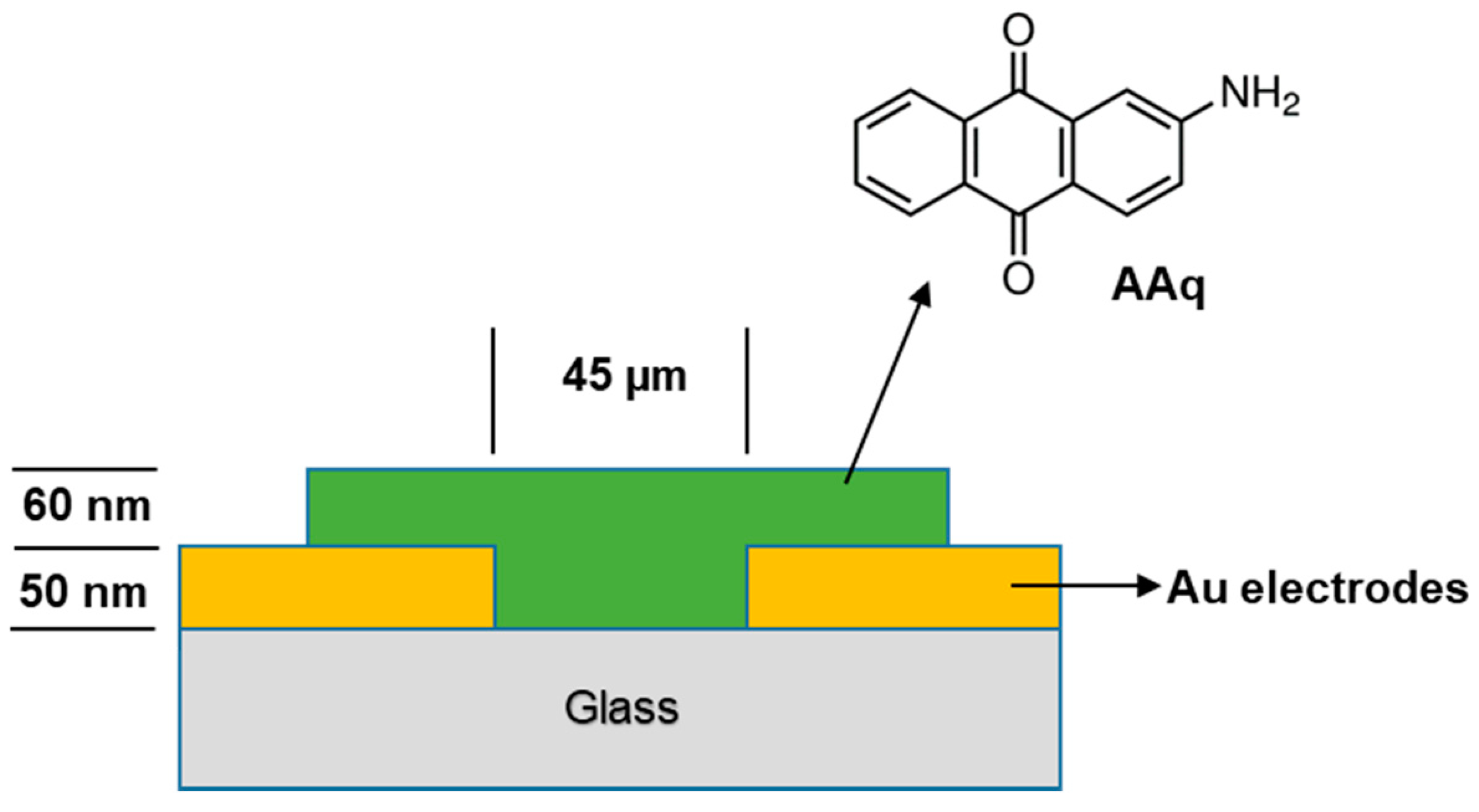
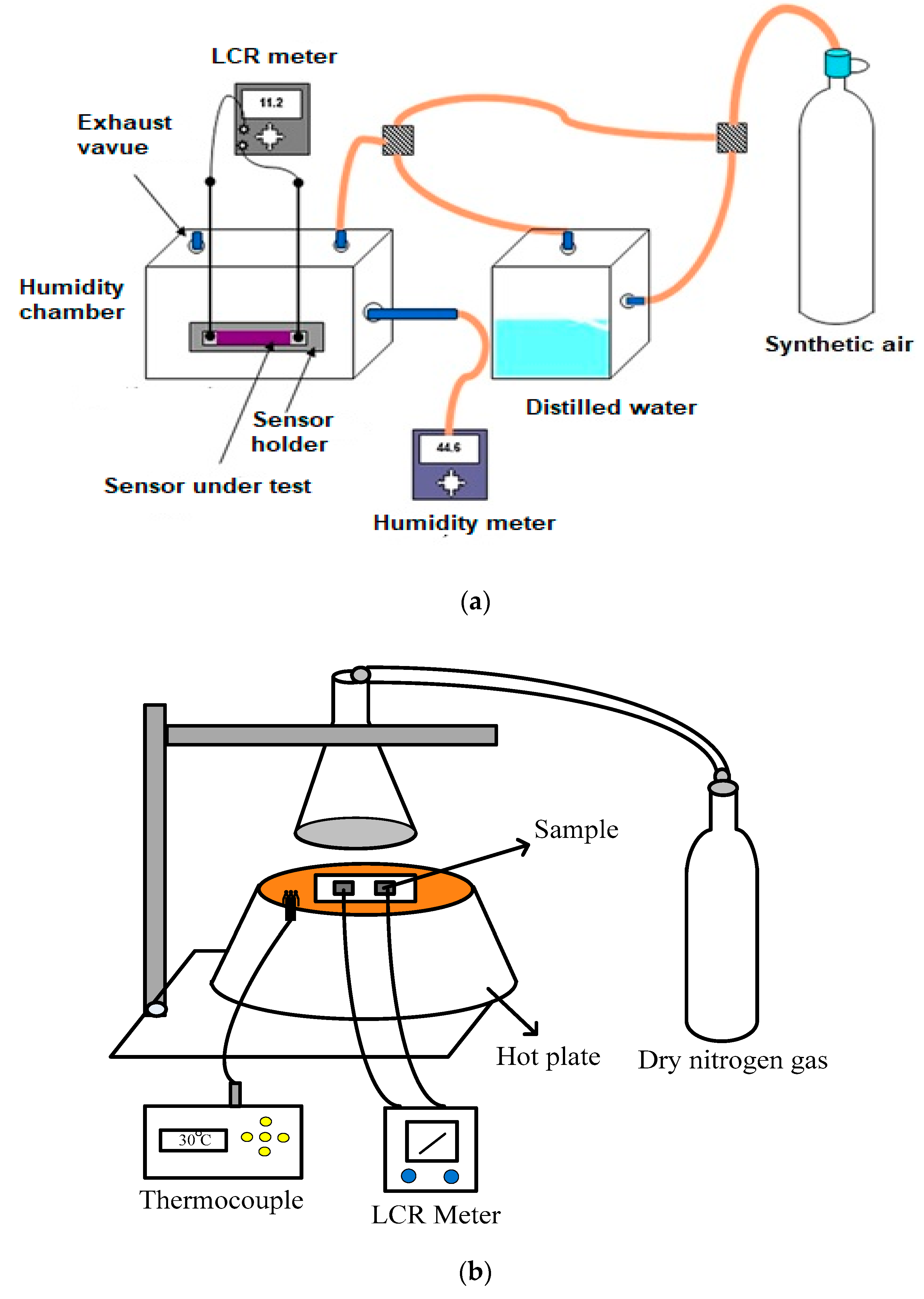
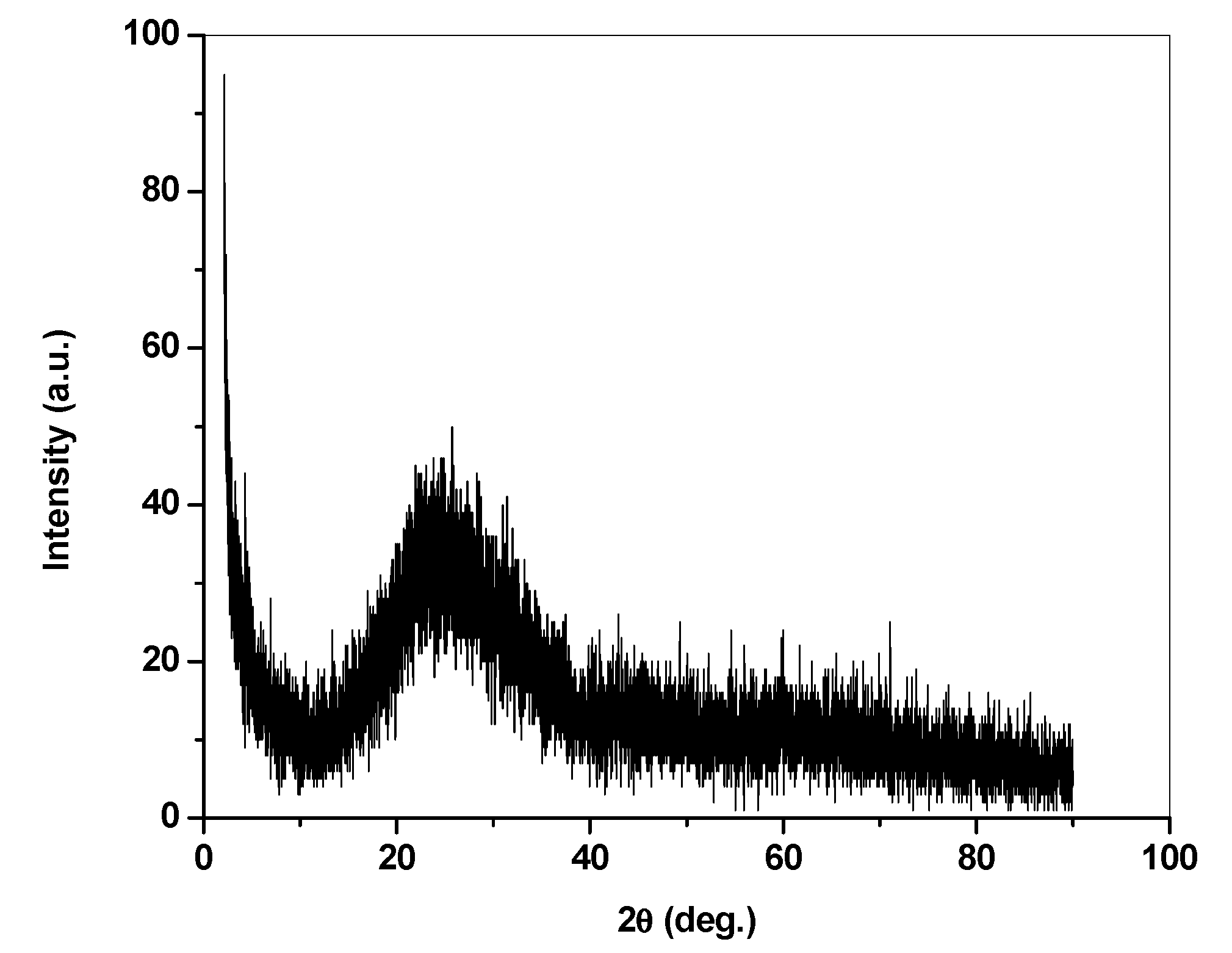
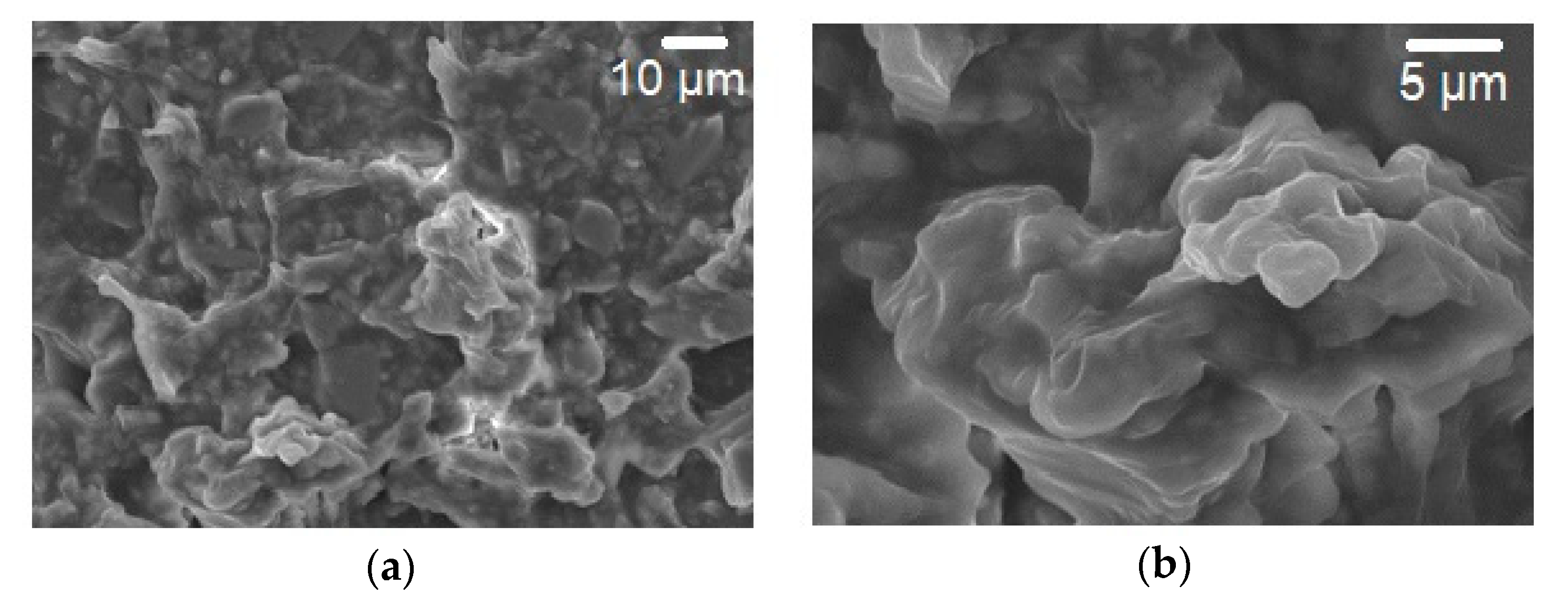
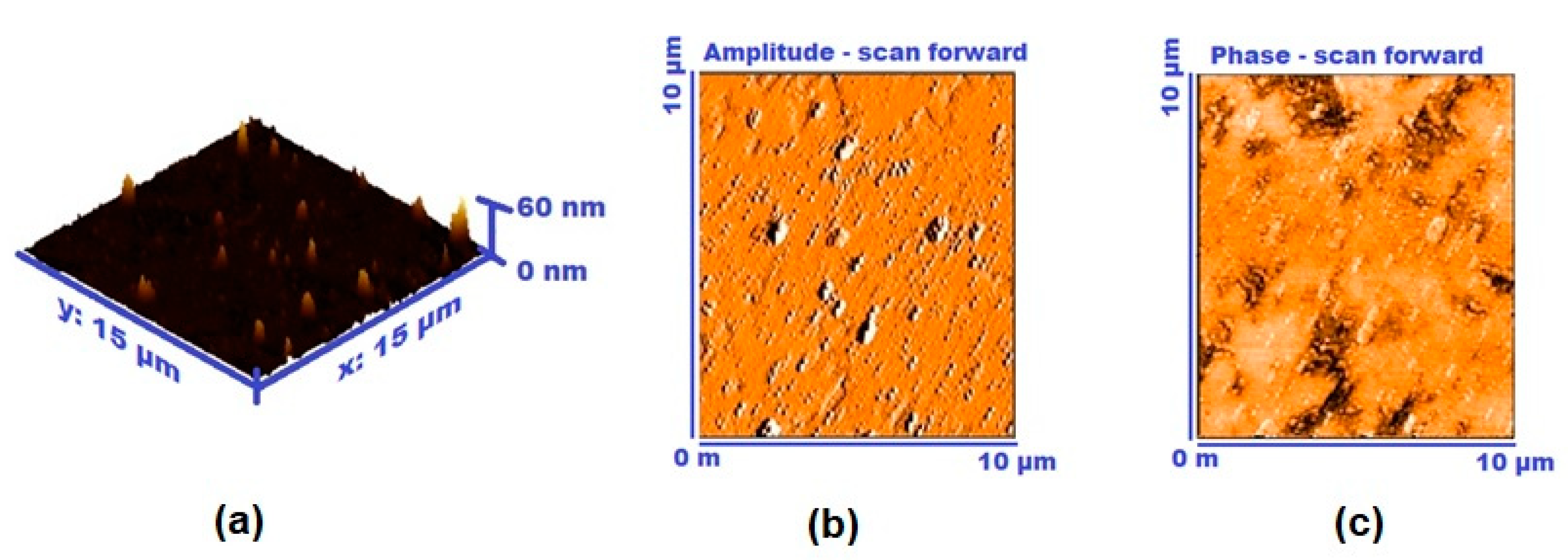
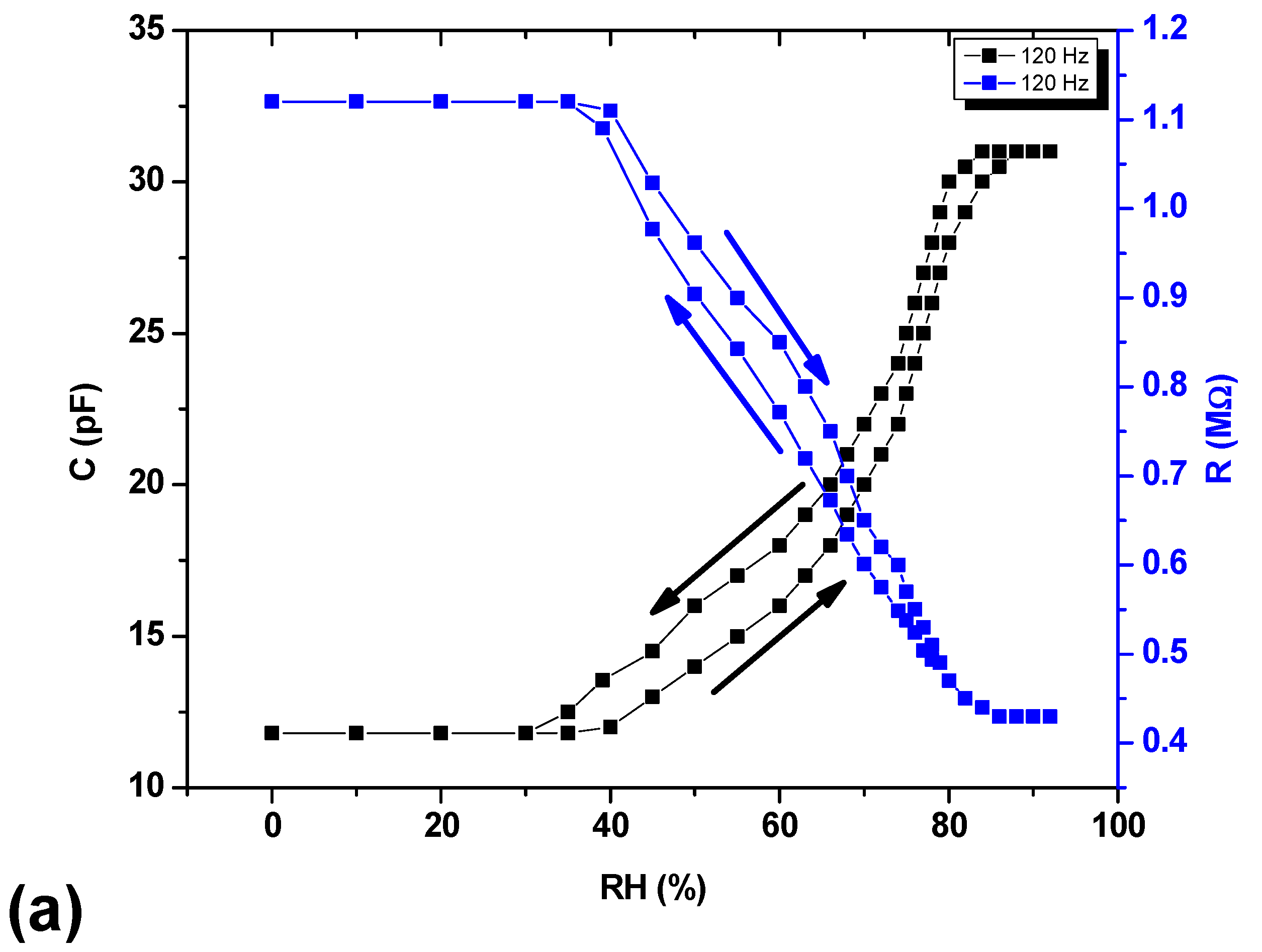

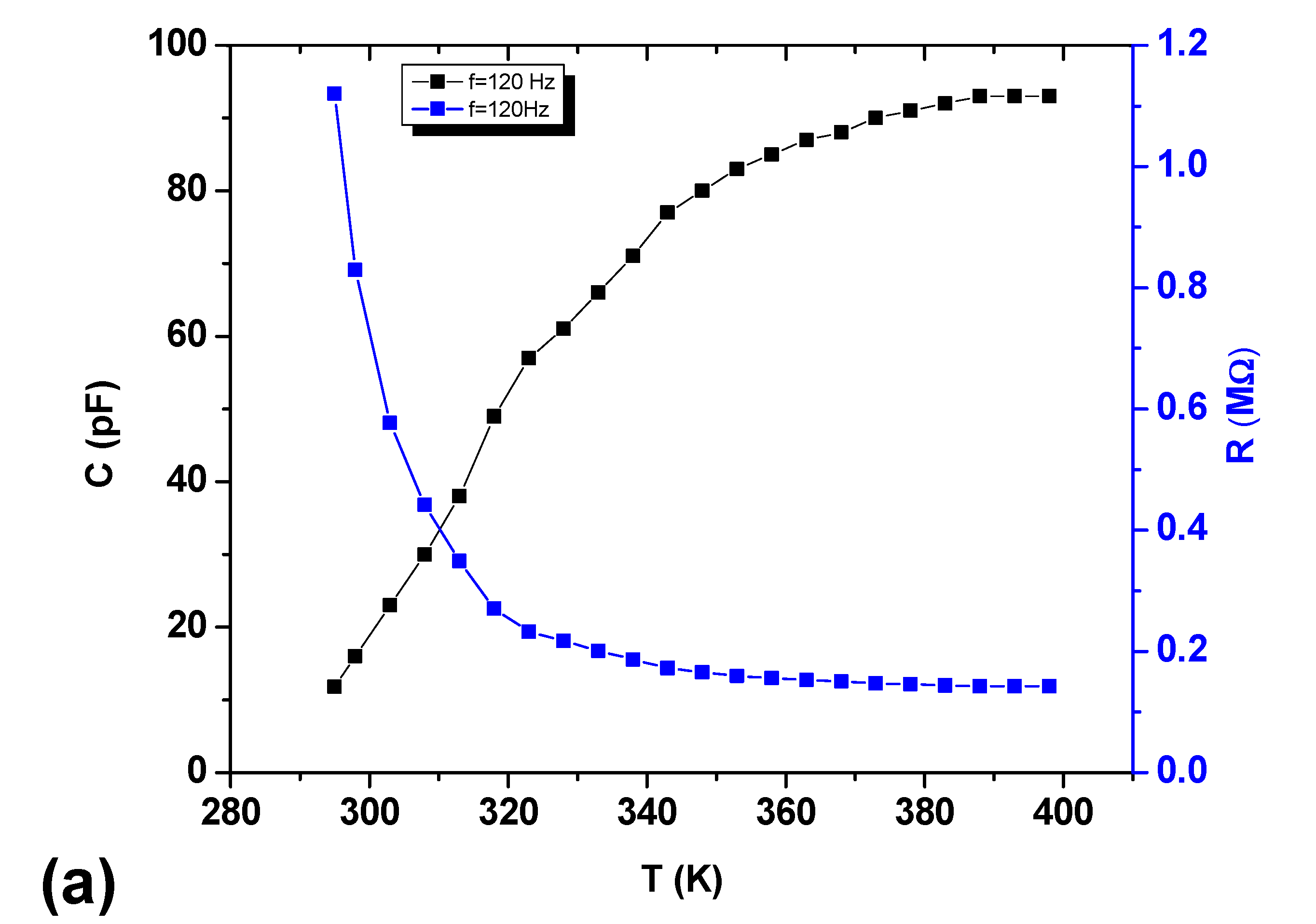
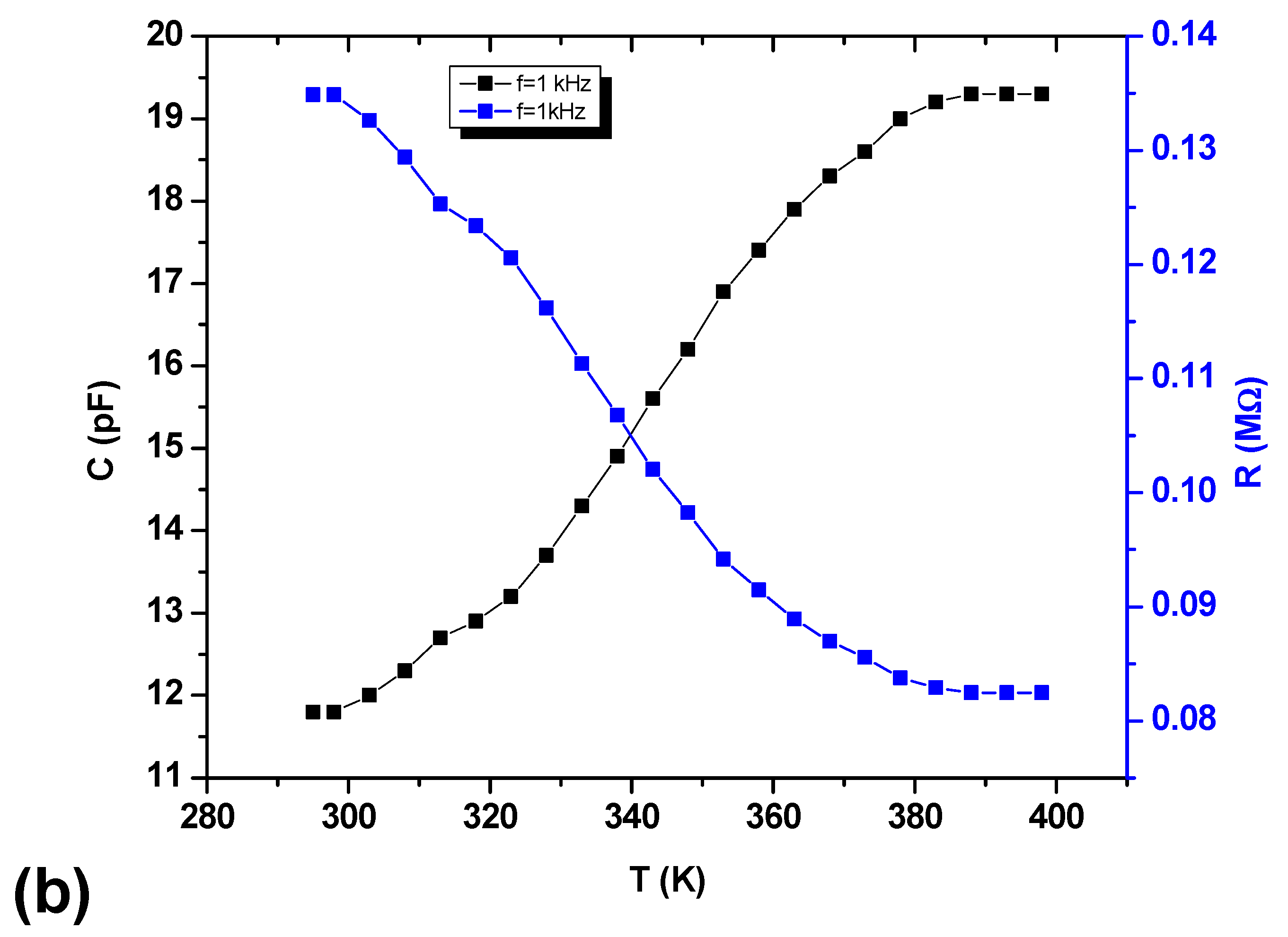
| Devices | Relative Humidity | Temperature | Reference | ||
|---|---|---|---|---|---|
| Sensitivity (pF/%RH) | Bandwidth (%RH) | Sensitivity (pF/K) | Bandwidth (K) | ||
| Ag/MO/Ag | - | - | 0.2 | 333−473 | [32] |
| Au/CoPc/Au | 8.2 | 65–93 | 0.4 | 330−462 | [34] |
| Ag/CuTIPP/Ag | 34 | 44–92 | 0.2 | 298−423 | [33] |
| Au/AAq/Au | 0.4 | 40–88 | 0.87 | 295−388 | Present work |
© 2020 by the authors. Licensee MDPI, Basel, Switzerland. This article is an open access article distributed under the terms and conditions of the Creative Commons Attribution (CC BY) license (http://creativecommons.org/licenses/by/4.0/).
Share and Cite
Ali, S.; Tahir, M.; Mehboob, N.; Wahab, F.; J. Langford, S.; Mohd Said, S.; R. Sarker, M.; Julai, S.; Hamid Md Ali, S. Amino Anthraquinone: Synthesis, Characterization, and Its Application as an Active Material in Environmental Sensors. Materials 2020, 13, 960. https://doi.org/10.3390/ma13040960
Ali S, Tahir M, Mehboob N, Wahab F, J. Langford S, Mohd Said S, R. Sarker M, Julai S, Hamid Md Ali S. Amino Anthraquinone: Synthesis, Characterization, and Its Application as an Active Material in Environmental Sensors. Materials. 2020; 13(4):960. https://doi.org/10.3390/ma13040960
Chicago/Turabian StyleAli, Salman, Muhammad Tahir, Nasir Mehboob, Fazal Wahab, Steven J. Langford, Suhana Mohd Said, Mahidur R. Sarker, Sabariah Julai, and Sawal Hamid Md Ali. 2020. "Amino Anthraquinone: Synthesis, Characterization, and Its Application as an Active Material in Environmental Sensors" Materials 13, no. 4: 960. https://doi.org/10.3390/ma13040960
APA StyleAli, S., Tahir, M., Mehboob, N., Wahab, F., J. Langford, S., Mohd Said, S., R. Sarker, M., Julai, S., & Hamid Md Ali, S. (2020). Amino Anthraquinone: Synthesis, Characterization, and Its Application as an Active Material in Environmental Sensors. Materials, 13(4), 960. https://doi.org/10.3390/ma13040960






